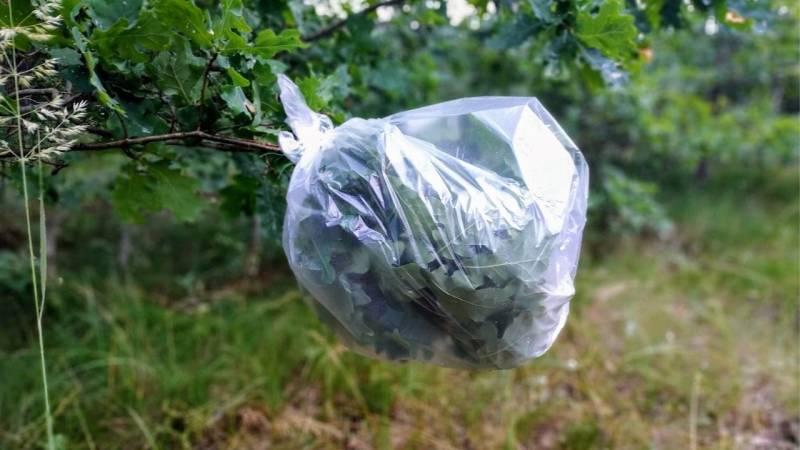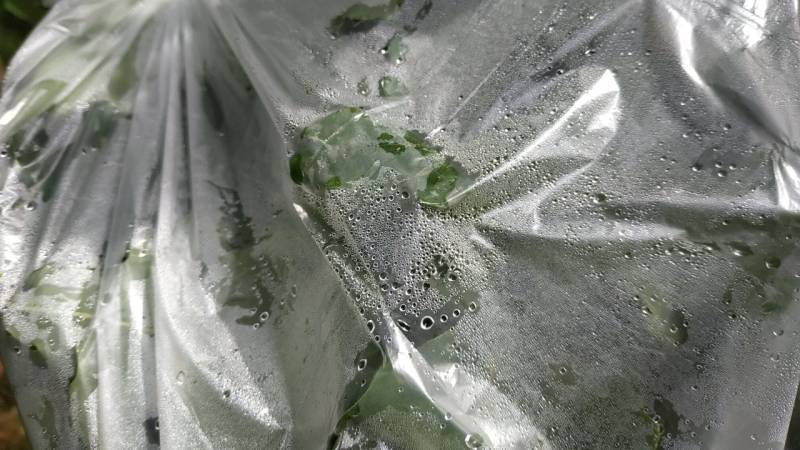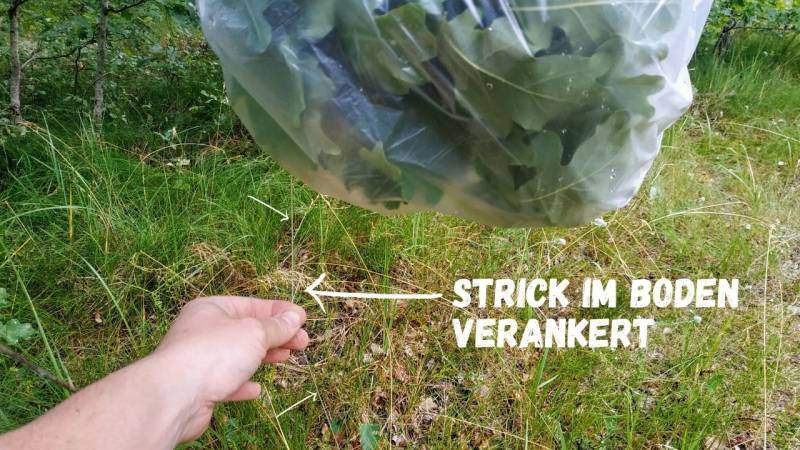
The transpiration bag: With this survival method you can effortlessly collect water in the wilderness.
👉 The key facts from this guide
- A transpiration bag is an efficient and simple method to collect water in the wilderness. It utilizes the greenhouse effect and the natural transpiration of plants.
- This method is one of the most efficient survival methods to gain water with very little effort.
- Materials: You need a large, transparent plastic bag, a rope, or wire, and a non-toxic tree with many leaves.
- Application: Place the plastic bag over a green branch or the shoot of a tree and tie it airtight. The sun heats the air in the bag, the plant transpires, and the water condenses on the inside of the bag.
- Result: After 12 to 24 hours, the water collects at the lowest point of the bag. Depending on the size of the bag and the number of leaves in the bag, you can collect several hundred milliliters of water.
- It is best to consume the water within 24 hours and change the branches after 48 hours to avoid damaging the tree.
What if you didn't have to go through the hassle of digging for water to access it?
In reality, digging for water is not necessary, as it is essentially hanging from trees.
You just have to "harvest" it.
The best part is:
With this efficient and simple method, you'll have water in just a few hours.
Every outdoor enthusiast should know about this method in order to survive in an emergency.
And there is one more point that is necessary:
In a survival situation, you must save your energy. Digging for water costs A LOT of energy.
The method with the transpiration bag costs you almost no energy.
Now, I will show you how easy it is.
The video about the transpiration bag
In the video, I also present the survival technique. Watch it if you prefer videos.
The greenhouse effect works for you
As a child, I often went to my grandparents' greenhouse. It was stuffy and warm inside, and drops of water hung on the windows. I often wondered why the air was "still" in there and why it was so humid. One day, Grandpa Rudi explained the system to me:
Through the glass, the sunlight falls into the greenhouse. The energy of the sunlight is absorbed by the objects (stones, soil, plants) inside. And over time, the objects radiate the warmth back. As there is little air exchange in the greenhouse, the warm air stays inside: the temperature rises.
We now use this effect for water extraction with the transpiration bag.
- Trees absorb moisture and water through their roots.
- They transport it to the leaves, and the leaves release moisture into their surroundings.
- By creating a "greenhouse climate," we enhance this effect and simultaneously collect water in our bag.

Bag, yarn and patience
These are the materials you need:
- Plastic bag, preferably a large transparent one, a black bag is unsuitable because sunlight cannot pass through
- Yarn or wire
- A non-toxic tree with many leaves (the more leaves, the more effective!)
- A lot of sunshine
Step by Step to Water
Basically, it's just one step to collect water using the transpiration method:
Take a large, transparent plastic bag and cover it over a green branch or shoot of a non-toxic tree.
Let's look at the details, because they are important:
- Find a branch that is predominantly in the sun all day.
- Shake the branch to get rid of any insects.
- Then place the plastic film over the branch.
- Tie the plastic film tightly at the opening to make it airtight.
- You may optionally tie the branch down to prevent water running towards the opening of the bag, but instead to a corner.

When the water vapor and droplets in the bag become heavier, they flow to the bottom of the bag.
That's it. Now you wait 12 to 24 hours and then check how much water has accumulated.
Depending on the size of the bag and the leaves in the bag, you can collect several hundred milliliters. With a large garbage bag (60 liters, for example) and a good tree on a sunny day, you can collect up to 500 milliliters.

Instructions for the Transpiration Bag
- The produced water may have a slight discoloration caused by the tannins (used for tanning) in the leaves. However, it tastes good and is immediately drinkable. Tannins are tanning agents and almost every fruit, such as an apple or a pear, contains tannins. They are non-toxic in normal amounts and even have a healing effect.
- It is best to consume the produced water within 24 hours.
- Change the branches after 48 hours to avoid damaging the tree.
Is that all?
Yep. That's how easy it is to collect water.
I just have to say it again so you remember:
This is one of the most efficient survival methods to obtain water with very little effort.
And now you know the method too. Congratulations.
Be sure to also take a look at THIS blog post, which will show you many more methods of finding and collecting water in the wilderness. And don't miss out on how to make drinking water from seawater.
Or leave a comment with your opinion.


Author of the guide
Martin Gebhardt
Hey, I'm Martin. On my blog, you will learn the basics and numerous details about living in the wild. I think survival, bushcraft and the good life in nature are the keys to happiness. Find me here on Instagram or on YouTube. You can find more about my mission on the About Me page.
Was this guide helpful?
19 people found this guide helpful.
5.00 out of 5 points (19 Ratings)
Comments (0)
This post may contain affiliate links. So if you click on the links and make a purchase, I will receive a small commission at no additional cost to you. Click here, to learn more about it.


